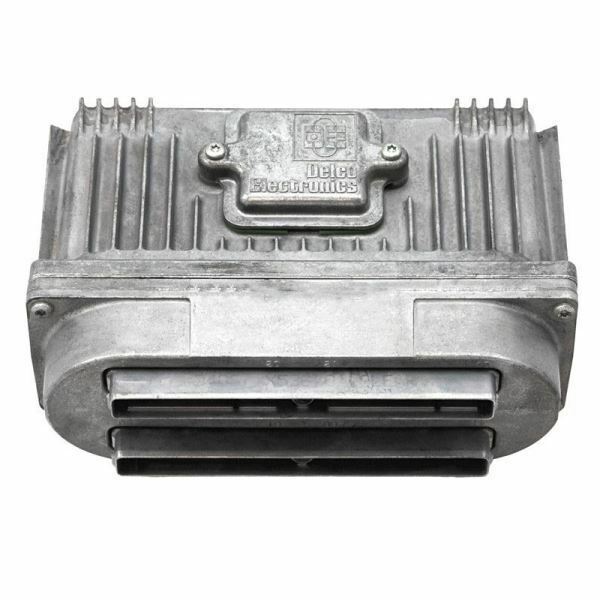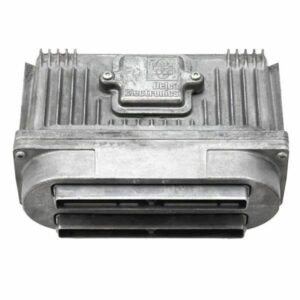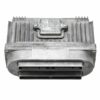Restore Peak Performance to Your GM Vehicle
Is your 1997 Buick Regal, Grand Prix, or another classic GM vehicle suffering from frustrating issues like stalling, erratic shifting, poor fuel economy, or a persistent Check Engine Light? As a technician with over two decades of experience, I’ve seen these symptoms countless times. Often, the root cause isn’t a faulty sensor or a bad fuel pump—it’s the vehicle’s brain, the Powertrain Control Module (PCM).
This isn’t just a replacement part; it’s a direct solution. We are providing a high-quality Powertrain Control Module, part number 19109047 (also compatible with 16227797), that arrives at your door ready to install. The biggest hurdle for this job is typically the programming, which requires expensive specialty tools and a trip to the dealership. We eliminate that completely. Simply provide us with your vehicle’s VIN during checkout, and our experts will flash the module with the latest, most stable GM factory software specific to your car. This ensures perfect communication between the engine and transmission for restored power, efficiency, and reliability.
Case Study: A Tricky Diagnosis
A few months back, a 1997 Pontiac Bonneville with the supercharged 3.8L came into the shop. The owner was chasing a random, intermittent misfire under heavy throttle and had already replaced plugs, wires, and a coil pack to no avail. No hard codes were stored, just a pending misfire count. After checking fuel pressure and for vacuum leaks, we hooked up a scope to the injector and ignition control signals coming from the PCM. We found that the driver circuit for cylinder 3 was dropping out unpredictably under load. It was a classic case of an internal PCM fault that only showed up under specific conditions. A new, correctly programmed PCM solved the problem instantly. This highlights why replacing the PCM is often the correct fix when all other components check out.
Is Your GM Vehicle Showing These Signs?
A failing PCM can cause a wide range of problems that can be easily mistaken for other issues. If you’re experiencing any of the following, this module is likely the solution you need:
- ✔ Unexplained Check Engine Light
- ✔ Stored diagnostic trouble codes (DTCs) like P0601 (Internal Control Module Memory Check Sum Error) or P0605 (Internal Control Module Read Only Memory (ROM) Error)
- ✔ Engine stalling or randomly shutting off
- ✔ Harsh or erratic automatic transmission shifting
- ✔ Noticeable decrease in fuel economy
- ✔ Engine cranks but refuses to start
- ✔ Failure to pass an emissions test
A Straightforward Guide to Installation
Replacing the PCM on these vehicles is a job most DIYers can handle with basic tools. Our pre-programming service makes it a true plug-and-drive process.
- Safety First: Disconnect the negative terminal from your vehicle’s battery and secure it away from the post to prevent accidental contact.
- Locate the PCM: On most of these models, the PCM is located in the engine bay, often inside the air filter housing for protection. Consult a repair manual for your specific vehicle if you’re unsure.
- Disconnect Connectors: Carefully release the locking tabs and disconnect the wiring harnesses from the old module. Inspect the connectors for any corrosion or damaged pins.
- Remove the Old Module: Unbolt the PCM from its mounting bracket. It’s typically held in by a few small bolts or nuts.
- Install the New Module: Mount your new, pre-programmed PCM onto the bracket and securely fasten it.
- Reconnect Everything: Plug the wiring harnesses back into the new module until they click firmly into place. Reconnect your vehicle’s negative battery terminal.
- Final Steps: Your vehicle may need to complete a security relearn procedure, which typically involves turning the key to the ‘ON’ position for 10-15 minutes. Start the engine and let it idle to allow the computer to sync with all the vehicle’s sensors.
Verified Vehicle Compatibility List
This module is a guaranteed fit for the following 1997 model year vehicles with the specified engine options. Please verify your vehicle is on this list before ordering.
- Bonneville: 1997 w/ 3.8L Supercharged Engine
- Camaro: 1997 w/ 3.8L Engine
- Eighty Eight: 1997 w/ 3.8L Supercharged Engine
- Firebird: 1997 w/ 3.8L Engine
- Grand Prix: 1997 w/ 3.8L Supercharged Engine
- Lumina Car: 1997 w/ 3.4L Engine
- Monte Carlo: 1997 w/ 3.4L Engine
- Park Avenue: 1997 w/ 3.8L Engine
- Regal: 1997 w/ 3.8L Supercharged Engine
- Riviera: 1997 w/ 3.8L Engine
Frequently Asked Questions
Why do you need my VIN?
Your Vehicle Identification Number (VIN) allows us to load the exact, correct GM factory software for your car’s specific options, engine, and transmission. This ensures flawless operation and is a critical step that we handle for you, saving you a trip to the dealer.
Is this part difficult to install?
No, for most individuals with basic hand tools, this is a very manageable job. Since the module comes pre-programmed, the physical swap is straightforward. See our installation guide above for the basic steps.
Will this fix my check engine light?
If the check engine light is caused by an internal failure of the PCM (like codes P0601-P0606), then yes, this will resolve the issue. It’s important to properly diagnose the cause of the light first, as it could also be a faulty sensor or other component.
What is the difference between a PCM and an ECM?
The terms are often used interchangeably. ECM stands for Engine Control Module, while PCM means Powertrain Control Module. A PCM is more comprehensive as it typically controls both the engine and the transmission functions, which is the case for this part.
Do I need to do anything after installation?
After installing the new PCM and reconnecting the battery, you may need to perform a simple security relearn procedure, which can be done without any special tools. The vehicle’s computer will then adapt to the engine’s sensors as you drive.



